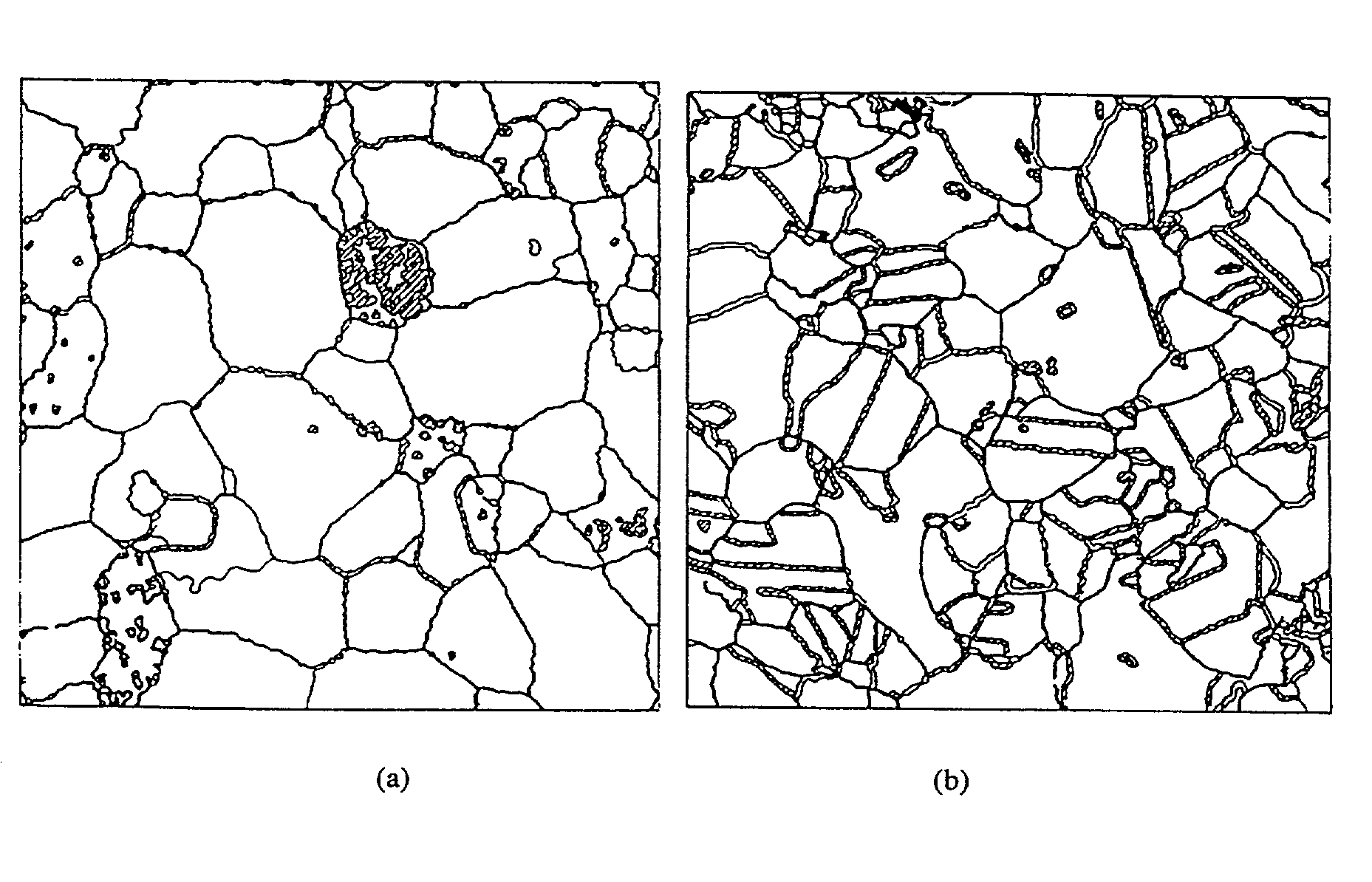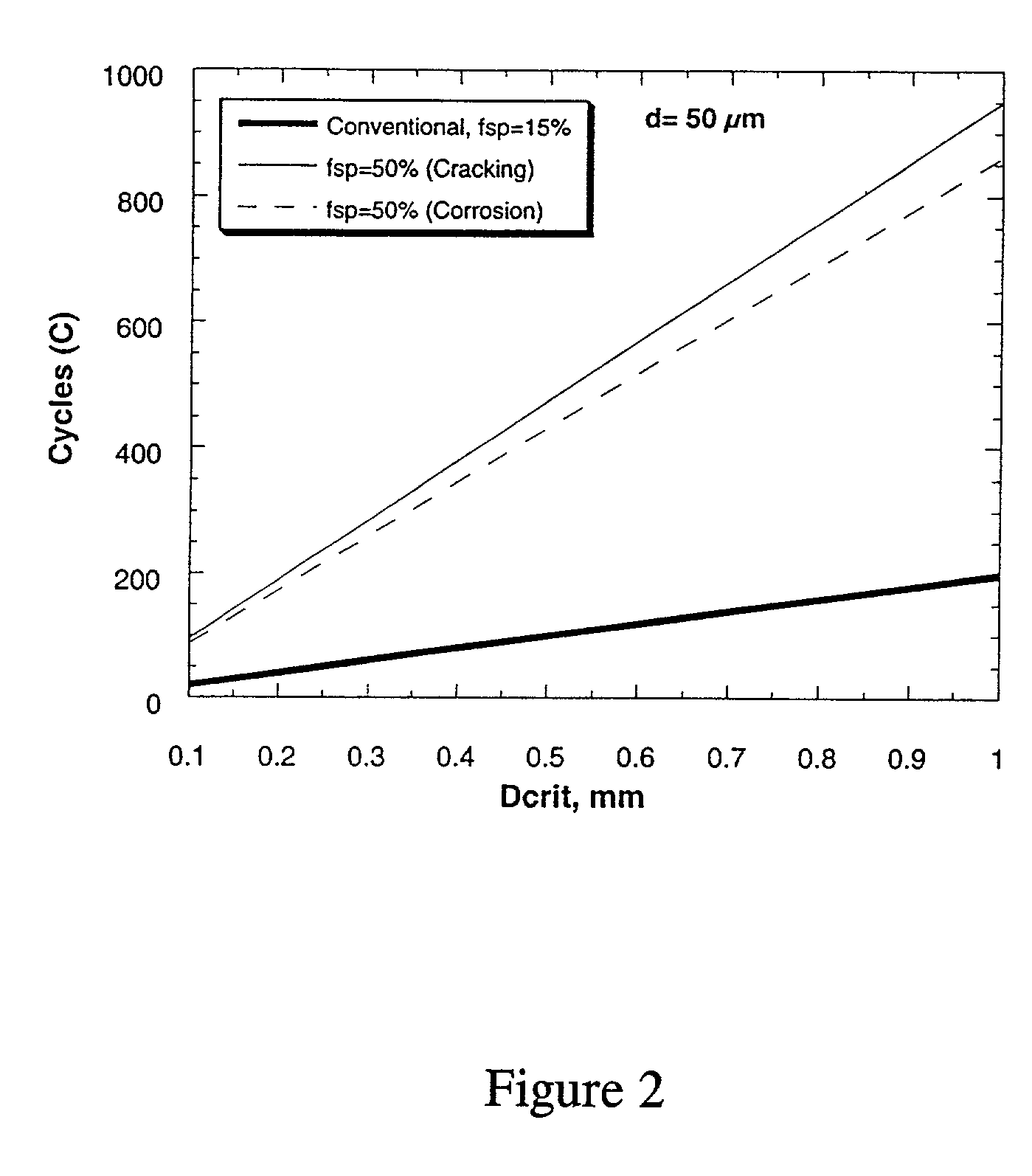Thermo-mechanical treated lead and lead alloys especially for current collectors and connectors in lead-acid batteries
a lead-acid battery and alloy technology, applied in the field of thermally mechanical treatment of lead-acid batteries, can solve the problems of affecting the life of industrial batteries, limiting the life of automotive batteries, and premature failure of lead-acid batteries, so as to improve the cycle life, improve the performance of lead-acid batteries, and improve the cycle life
- Summary
- Abstract
- Description
- Claims
- Application Information
AI Technical Summary
Benefits of technology
Problems solved by technology
Method used
Image
Examples
example # 2
EXAMPLE #2
[0078] A series of commercial lead alloys of the Class II type previously described, were obtained in a conventional cast condition in the form of strip. These strips were subsequently processed using the techniques described in the present invention. The specific alloys and processing conditions are summarized as follows.
[0079] A Pb-0.073 wt % Ca-0.07 wt % Sn alloy (Class II) was processed by three cycles each comprised of cold rolling at room temperature to achieve a 40% reduction in thickness, annealing at 270.degree. C. for 10 minutes in air followed by air cooling. The resulting microstructural improvement in terms of special grain boundary content is summarized in FIG. 5 (identified as PbCaSn in FIG. 5). The special grain boundary content was increased from 11% in the as-cast starting material, to 51% in the material processed by the method described.
[0080] A Pb-0.065 wt % Ca-0.07 wt % Sn 0.03 wt % Ag alloy (Class II) was processed by two cycles each comprised of col...
example # 3
EXAMPLE #3
[0084] A Pb-0.03 wt % Ca-0.7 wt. % Sn 0.06 wt % Ag alloy, representative of a Class I alloy was produced using a commercial rotary net shape casting process. The cast strip of 0.86-0.89 mm thickness was subsequently subjected to a single processing cycle comprised of approximately 20% cold tensile strain (room temperature), and heat treatment in an air convection oven at a temperature of 250.degree. C. for 5 minutes followed by cooling to ambient temperature. The strain was introduced at room temperature solely through the grid expansion process and was controlled by the tool die geometry (i.e., diamond height of expanded mesh). For comparison purposes a wrought strip was produced without subsequent recrystallization heat treatment. In this case, cast strip of 1.72 mm thickness was cold rolled by 50% and similarly expanded to mesh. The proportion of special grain boundaries present in the as-cast, wrought, and single step GBE processed materials were found to be 16.0%, 15....
example # 4
EXAMPLE #4
[0086] Various lead alloys were subjected to the deformation and annealing cycle used to make the recrystallized lead-alloy according to this invention. Each of the samples was deformed at room temperature to 25% reduction in thickness and then annealed by heat-treating at 255.degree. C. for five minutes. After the deformation reduction and annealing, each of the aforementioned lead alloys was tested for hardness. A minimum of six hardness measurements at each of two locations of the test alloys were obtained using a Shimadzu model HMV2000 micro hardness tester utilizing a 25 g load. The hardness of each metal was also measured in the same way in the as-cast condition (i.e. without being subjected to deformation and annealing cycle). The f.sub.sp count ofthe as-cast material samples prior to GBE processing in all cases was between 10 and 15%. The results of the hardness test for each of the lead alloys is shown in Table 2. In all instances, the deformation reduction and he...
PUM
| Property | Measurement | Unit |
|---|---|---|
| temperature | aaaaa | aaaaa |
| solvus temperature | aaaaa | aaaaa |
| temperature | aaaaa | aaaaa |
Abstract
Description
Claims
Application Information
 Login to View More
Login to View More - R&D
- Intellectual Property
- Life Sciences
- Materials
- Tech Scout
- Unparalleled Data Quality
- Higher Quality Content
- 60% Fewer Hallucinations
Browse by: Latest US Patents, China's latest patents, Technical Efficacy Thesaurus, Application Domain, Technology Topic, Popular Technical Reports.
© 2025 PatSnap. All rights reserved.Legal|Privacy policy|Modern Slavery Act Transparency Statement|Sitemap|About US| Contact US: help@patsnap.com



